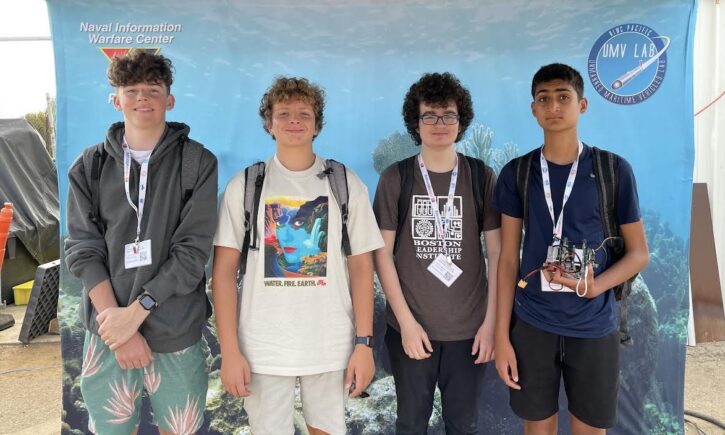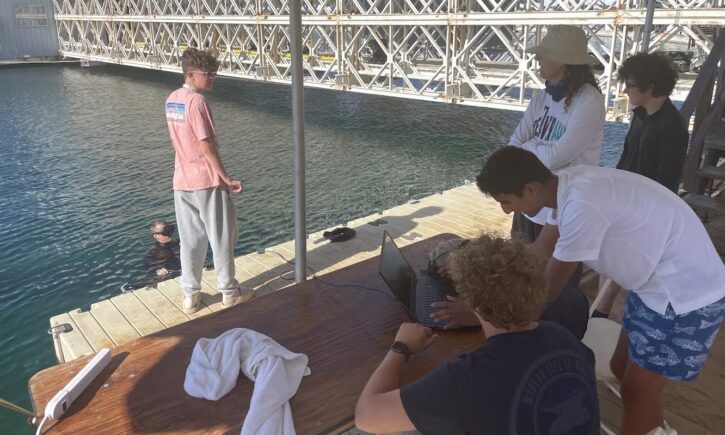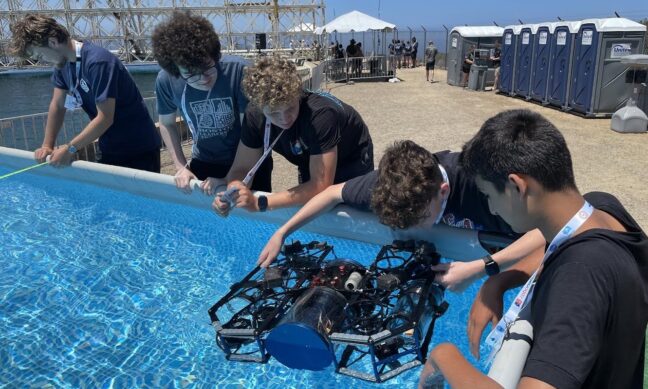Beaver’s robotics team—Beaver AUV—spent a week in San Diego for RoboSub 2023, an international student competition focused on designing and building robotic submarines. Throughout the year, the teams prepare for the event by building and testing their experimental AUVs (Autonomous Underwater Vehicles). The behaviors demonstrated by these machines mimics those of real-world systems currently deployed around the world for underwater exploration, seafloor mapping, and sonar localization. The competition is filled with college and university teams from around the globe as well as a handful of high school teams- five high school teams to be exact.
I realized I had a lot of free time over the summer, and it sounded like a really fun and interesting experience. I also thought it sounded like a good opportunity to learn more about programming and hardware.
-Andre Gordon ’26

Upon arriving in San Diego, the team noticed one of the AUV’s hulls was damaged in transit and quickly got to work repairing the sub. Alongside maintenance of the sub, writing software to stabilize the sub and complete the challenges was also a major component in preparing for the competition. Maintaining proper balance in the water and managing the right level of buoyancy to ensure the sub can properly dive were also primary focuses of the team.
My favorite moment was definitely when we got the PID controller working with the depth sensor. It was pretty early on, and it was such a great feeling to see the sub be able to very accurately keep a depth, even while moving around. It was probably one of our first big achievements, so I’m really proud of it.
-Andre Gordon ’26
In the competition, each student-designed-and-built robot must complete a difficult series of visual and acoustic-based tasks. Teams sign up for times slots throughout the early part of the week to try and qualify for the finals. After some trial and error and a lot of work in the practice pool, Beaver AUV qualified for a wild card spot in the semi-finals. Following this exciting news, the team narrowed their focus on implementing a PID controller to control the direction the sub moves in, in addition to controlling the depth.

The team continued to improve the autonomy of the robot in the testing pool, eventually achieving a consistent direction moving forward under PID control, in addition to staying at a certain depth. Overall, the team was relatively successful compared to how we started the week, and they established a good base on which to build for next year.
-Mr. Muschamp, Physics and Engineering Teacher
Beaver AUV is looking forward to getting back to work on the sub and taking what they learned in San Diego and applying it to next year’s competition.

